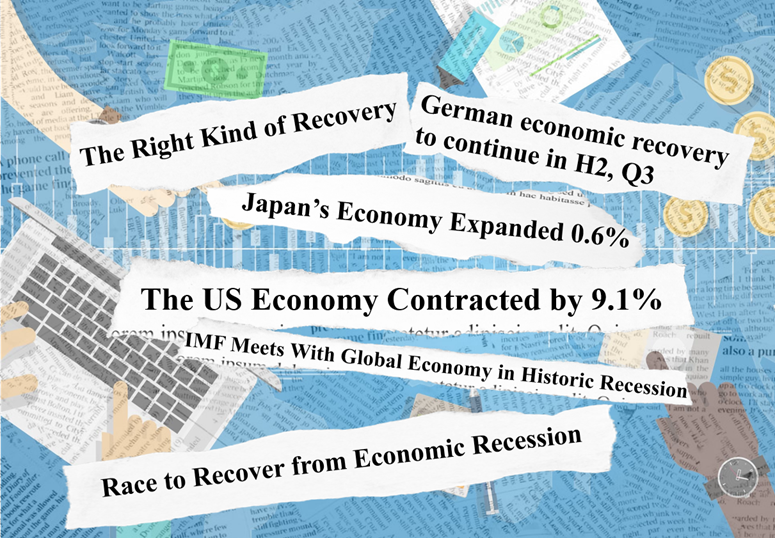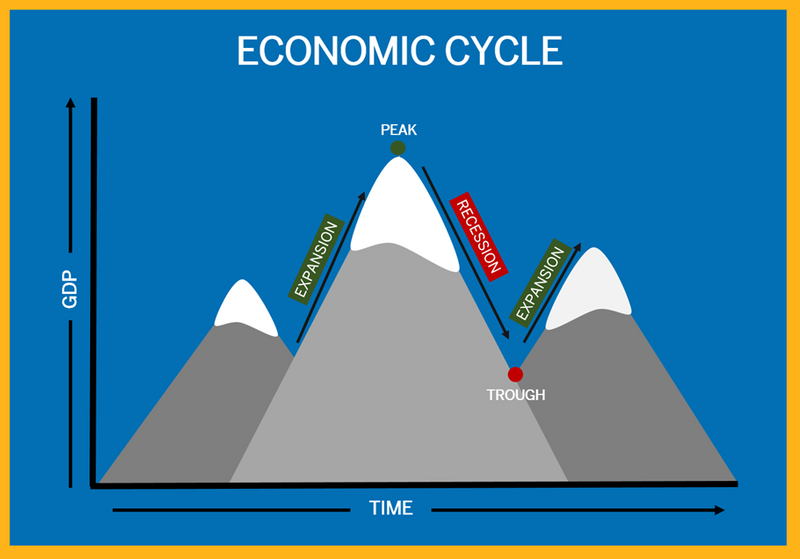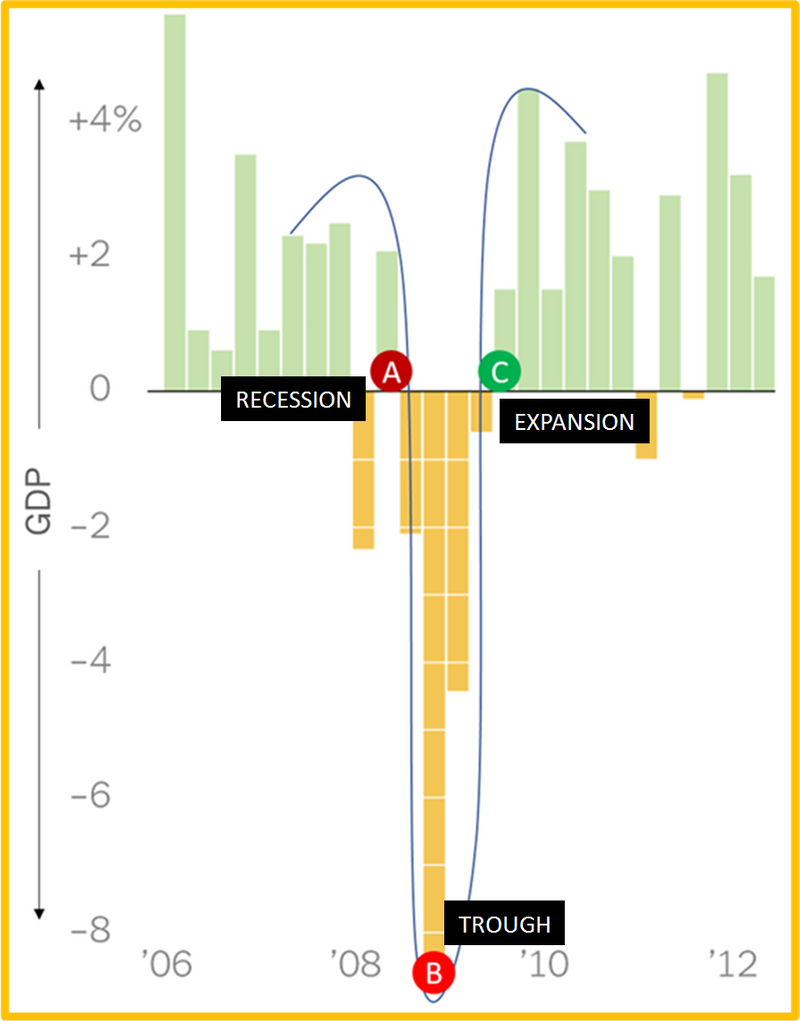
This logo isn't an ad or affiliate link. It's an organization that shares in our mission, and empowered the authors to share their insights in Byte form.
Rumie vets Bytes for compliance with our
Standards.
The organization is responsible for the completeness and reliability of the content.
Learn more
about how Rumie works with partners.

"The US economy contracted by 9.1% and not 32%. Japan's economy expanded by 0.6% in August."
Have you ever wondered what these statements mean? Is the economy really contracting? Are the factories producing at lower outputs? What will happen to demand and supply?
Understanding the economic cycle and its stages will help us answer these questions.
What Is The Economic Cycle?
The economic cycle, also known as the business cycle, is the fluctuating state of an economy from periods of economic expansion (growth) and contraction (recession).
It's usually measured using the Gross Domestic Product (GDP) of a country.
Did you know?
What Are The Stages Of The Economic Cycle?

The economic cycle has four distinct stages:
An expansion is defined by increasing employment, economic growth, and rising prices.
A peak is the highest point of the cycle when the economy is producing at a maximum level of output, unemployment is low, and inflation is high.
Following a peak, the economy typically enters a correction period called a recession where growth slows, unemployment increases, and prices stagnate.
The trough of the cycle is reached when the economy hits a low point and the recovery begins.
Quiz
If the economy is currently experiencing high growth and inflation combined with low unemployment, it is likely to be at which phase of the economic cycle?
In the expansion phase, the economy will experience high growth and inflation combined with low unemployment.
Case Study: American Economy 2007 - 2012

Starting in October 2007, the US economy entered a recession, point A. GDP fell below zero.
There was a steady increase in unemployment, and a decrease in production levels.
Throughout 2009, the economy was constantly shrinking, and reached the lowest point B, the trough, with -8% GDP.
In August 2009, the economy started the path to recovery, (moving toward point C).
The inflation and unemployment levels were still rising, but at a slower rate.
By 2010, the GDP levels were once again in green with increasing production levels and decreasing unemployment, reentering the expansion stage.
Effects
The banking and mortgage markets collapsed.
Unemployment increased from 5% to 9.5%, peaking at 10% in October 2009.
Poverty increased from 12.5% in 2007 to more than 15% in 2010.
U.S. stock prices fell by 57% between 2007 and 2009, eroding a magnitude of wealth.
The recovery was initiated by the various fiscal and monetary reforms led by the US government.
If you continue studying the US economy, you will notice that this general outline of the economic cycle repeats itself.
Take Action
The next time you read an economic report, try to answer the following questions:
What are the GDP levels?
Is the unemployment rising or falling?
What are the inflation levels?
If you answer these questions correctly, you have identified the stage of economic cycle!
This Byte has been authored by
Sahiba Singh
Instructional Design at American Express